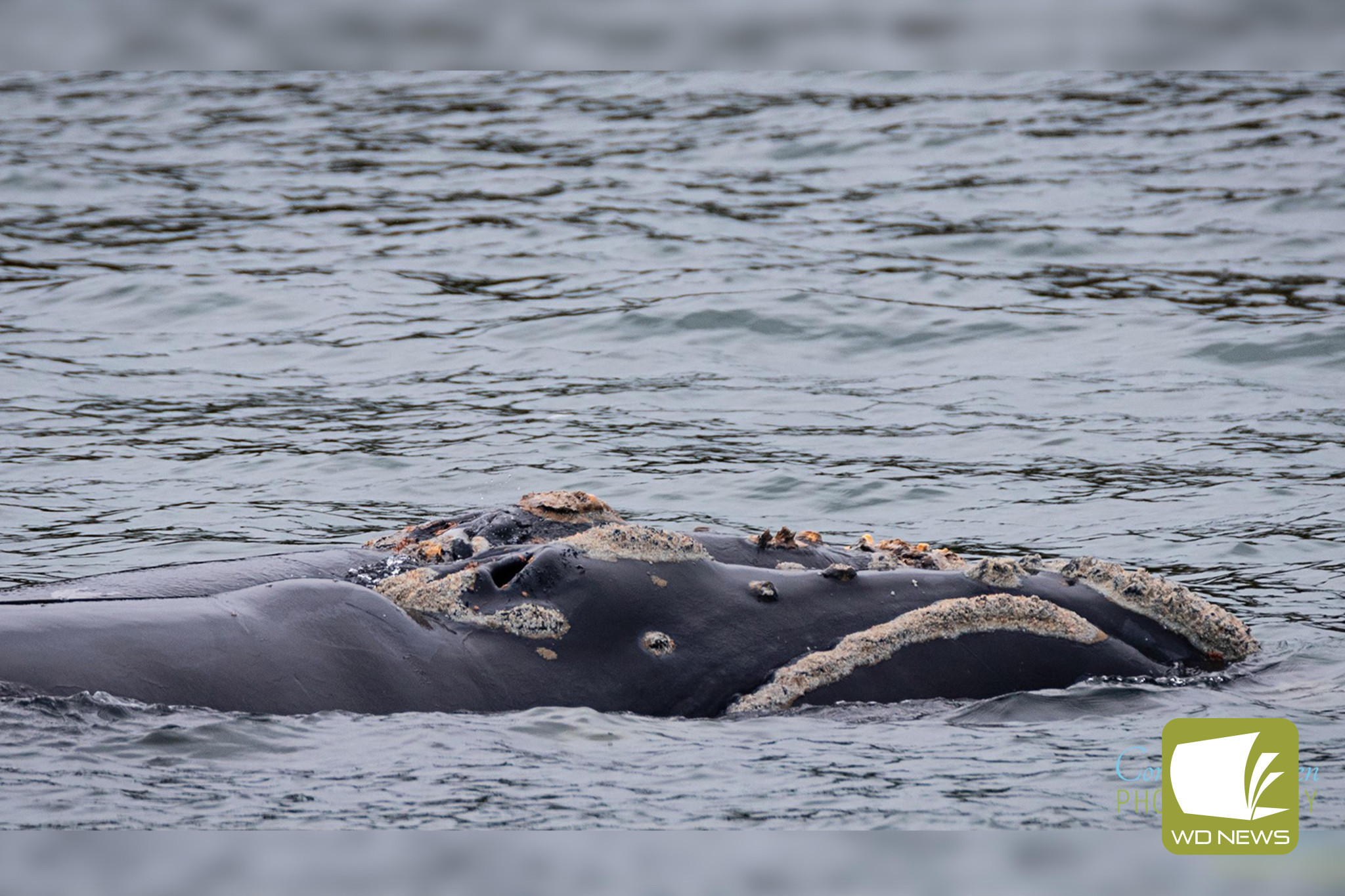General News
2 July, 2025
Southern right whales arrive for calving
WHALES have been sighted off the coast from Port Campbell to Peterborough, sparking discussion about protecting whale safety and community contribution to whale research.

The whales most commonly seen in the south west area are known as southern right whales.
Southern right whales can be identified by the unique patterns on top of their head and around their chin and lower jaw, known as callosities, and they migrate this time of year.
They are typically spotted off the coast of Victoria from May to October as they arrive for winter calving.
These whales are particularly active along the Great Ocean Road, but as they are endangered, can face significant threat, especially during this vulnerable time.
Department of Energy, Environment and Climate Action (DEECA) senior scientist community ecology Dr Kasey Stamation said people should urge caution on boats when out at sea.
“Southern right whales are vulnerable to boat strikes and disturbance, which is why we urge vessel operators to be aware of their presence when on the water,” she said.
“Southern right whales can be difficult to spot as they have no dorsal fin.
“They can look like floating logs as they rest near the surface, often in shallow water close to shore.”

To assist in research of southern right whales and to record sightings, people can join the citizen science project online known as WhaleFace.
The WhaleFace platform is a website which allows community members to contribute photos and sightings to assist valuable southern right whale research and can be found at www.swifft.net.au/whaleface.
This program was created by DEECA with the aim of making it easier for more people to get involved and log sightings of southern right whales.
“Contributions to WhaleFace play a vital role in helping us track the life histories of individual whales,” Dr Stamation said.
“We use the information received to better understand population trends, movement patterns, and habitat use.
“Anyone can be a citizen scientist.
“Over the years, we’ve received sightings reports from locals and visitors right along the Great Ocean Road region, including many who are whale enthusiasts.”
Dr Stamation said every photo was important for critical research into the endangered species.
“The more images we receive, the better our chances of accurately identifying an individual,” she said.
“We encourage people to submit multiple photos of the same individual if they have them, even if someone else has uploaded images of the same whale.”
The southern right whale is listed as endangered under both the Commonwealth Government’s Environmental Protection and Biodiversity Conservation Act 1999 and the Victorian Government’s Flora and Fauna Guarantee Act 1988.
Read More: local